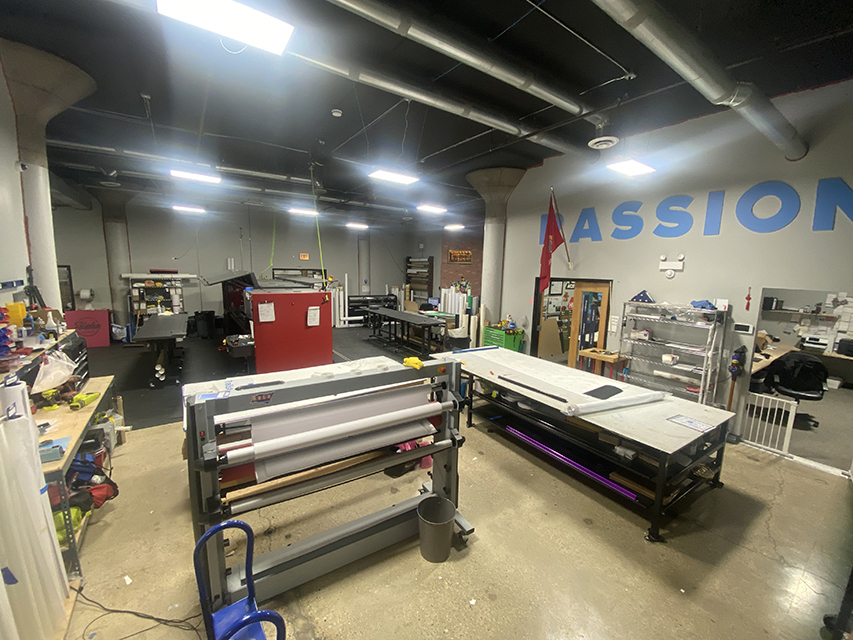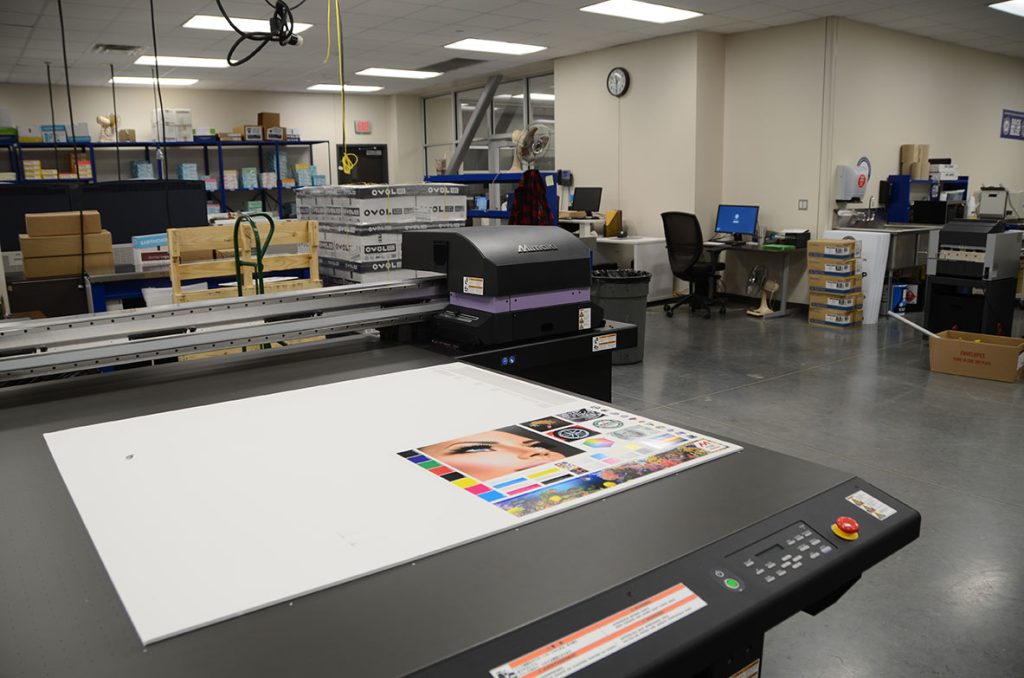Why Every Interior Designer Relies on a Print Shop Near Me
Why Every Interior Designer Relies on a Print Shop Near Me
Blog Article
The Ultimate Overview to Using Printing Services for Custom-made Art Prints
Steering with the world of customized art prints calls for a clear understanding of different printing services. Artists have to think about factors such as printing techniques and materials to attain the wanted end result. Each choice, from art work prep work to shade calibration, plays an important duty in the last product. As they explore these elements, artists can expose the potential for their work to get in touch with audiences in a meaningful way. What actions can they require to guarantee their prints stand apart?
Recognizing Different Types of Printing Providers
Many individuals may forget the details of printing solutions, comprehending the various kinds available is important for anyone looking to develop customized art prints. The most common kinds include electronic printing, balance out printing, and screen printing. Digital printing is preferred for its fast turnaround and capacity to create high-quality pictures straight from electronic documents, making it optimal for little runs. In comparison, offset printing deals exceptional photo quality and is cost-efficient for bigger quantities, using plates to move ink onto paper. Screen printing, frequently used for fabrics and marketing items, involves pressing ink with a mesh display, permitting dynamic shades and appearances. Each approach has its unique benefits and limitations, making it essential for musicians and designers to examine their certain needs, such as quantity, desired quality, and budget plan, before selecting a printing solution that aligns with their artistic vision.
Picking the Right Materials for Your Prints
Picking the proper products is vital for attaining top quality customized art prints. Understanding the various kinds of paper and the relevance of ink top quality can substantially impact the result. Musicians need to think about these elements to ensure their vision is precisely stood for in the published piece.
Paper Types Explained
Selecting the ideal paper kind is crucial for attaining the desired aesthetic and sturdiness in custom-made art prints. Numerous choices exist, each offering distinct characteristics. For example, shiny paper enhances color vibrancy and information, making it suitable for digital photography prints. Conversely, matte paper provides a softer coating, which is preferable for art work that needs nuance and appearance. Art paper, commonly made from cotton or alpha cellulose, offers historical high quality and appropriates for replicating intricate information in paints (Print Shop Near Me). Furthermore, specialized documents, such as watercolor or canvas, can add unique aesthetic effects. Inevitably, selecting the ideal paper type will greatly affect the final presentation, ensuring that the art work is both visually appealing and resilient
Ink Quality Issues
Ink top quality plays an important role in the total success of customized art prints. Premium inks ensure lively shades, sharp information, and durability, which are crucial for showcasing creative work. When choosing printing services, artists should consider pigment-based inks over dye-based alternatives, as they provide much better fade resistance and color security. In addition, the choice of ink must complement the picked paper type, enhancing the print's visual impact. Ecological elements, such as moisture and temperature level, can likewise affect ink performance; for that reason, artists should ask about ink formulas that stand up to these aspects. Inevitably, buying exceptional ink top quality can boost the last item, ensuring that the art print continues to be true to the musician's vision for several years to find.
Checking Out Printing Strategies: Digital vs. Traditional
While both typical and electronic printing methods have their one-of-a-kind advantages, the decision on which technique to use commonly rests on the specific requirements of the artwork. Digital printing masters versatility and rate, permitting quick turnaround times and the capacity to print as needed. This technique is specifically valuable for artists that call for little runs or special items, as it eliminates the need for extensive configuration processes.Conversely, typical printing methods, such as lithography and screen printing, commonly generate richer appearances and shades, interesting musicians looking for an extra responsive and authentic coating. These techniques can improve the depth and quality of the art work, making them suitable for larger versions. Furthermore, traditional methods may offer a distinct visual that digital printing sometimes has a hard time to reproduce. Ultimately, the choice between these methods need to think about factors like preferred top quality, quantity, and imaginative intent, guiding musicians to one of the most appropriate alternative for their projects.

Preparing Your Artwork for Printing
Efficiently preparing art work for printing needs cautious interest to detail, despite the chosen printing method. Musicians have to assure that their data are created at the appropriate resolution, generally 300 DPI, to maintain sharpness and clarity. The proper shade mode, generally CMYK for print, is crucial to attain the desired color accuracy. Artists should additionally take into consideration the measurements of the art work, making certain to consist of hemorrhage locations if essential, to stop any type of unwanted white sides after trimming.Additionally, documents layouts play a vital function; TIFF and PDF are typically liked for top quality prints. Before entry, it is necessary to evaluate the art work for any imperfections or undesirable aspects. By carefully checking these aspects, artists can improve the chance of their prints lining up with their creative vision, eventually bring about an effective printing result.
The Importance of Color Calibration and Proofing
Shade calibration and proofing are crucial action in the printing procedure, as they assure that the last output properly mirrors the artist's vision. Correct color calibration guarantees that the colors showed on the screen match those that will certainly be printed. This procedure entails readjusting the display setups, printer profiles, and inks to attain a consistent color representation.Additionally, proofing permits artists to preview their job before the last print run. This stage enables them to identify and remedy any disparities in detail, saturation, or shade, thereby reducing expensive mistakes. By utilizing hard-copy or electronic evidence, musicians can make informed choices regarding modifications required for suitable results.Incorporating color calibration and proofing right into the printing process not only boosts the top quality of the final product however additionally cultivates a reliable partnership in between the artist and the printing solution, ensuring contentment and integrity to the original artwork.
Choosing the Perfect Dimension and Format for Your Prints

Advertising and Selling Your Custom-made Art Prints
Advertising and marketing and selling customized art prints requires a strong brand name identity to stand apart in an open market. Effective on the internet promo click here for info methods and the calculated usage of social media systems can significantly boost exposure and interaction. By incorporating these elements, artists can develop an engaging visibility that draws in prospective buyers.
Structure Your Brand Identity
Developing a strong brand name identification is essential for artists looking to successfully market and market their custom art prints. This identity includes the artist's special design, values, and tale, which reverberate with potential purchasers. Musicians need to produce a natural visual presence across all systems, including logos, color schemes, and typography that show their creative vision. In addition, a clear goal statement assists interact the artist's function and passion. Involving narration regarding the motivation behind each item can foster emotional connections with the target market. Consistency in messaging, whether on social media sites or product packaging, boosts acknowledgment and trust fund. By thoroughly curating their brand identification, artists can separate themselves in an open market, attracting devoted consumers that appreciate their creativity.
Reliable Online Promotion Methods
What strategies can artists use to properly advertise their personalized art publishes online? Creating an expert site showcasing the artwork is crucial. This website must include in-depth summaries and premium photos to involve prospective purchasers. Furthermore, artists can utilize email marketing by building a client listing to share updates, promotions, and brand-new releases. Teaming up with bloggers and influencers in the art community can expand reach and trustworthiness. Using unique pieces or limited-time discounts can also develop necessity, motivating purchases. Moreover, optimizing web content for internet search engine via appropriate keyword phrases will certainly improve exposure. Lastly, keeping a blog concerning the imaginative procedure can bring in art fanatics, promoting a much deeper connection with the target market and enhancing the general advertising and marketing technique.
Making Use Of Social Media Site Platforms
Social find more information media systems work as powerful devices for musicians aiming to market and market their custom art prints. By leveraging platforms like Instagram, Facebook, and Pinterest, musicians can showcase their work to a substantial target market. Involving visuals and strategic hashtags can increase visibility, attracting possible purchasers to their profiles. Routinely posting content, such as behind-the-scenes processes or new styles, assists keep audience passion and promotes a sense of community. Furthermore, musicians can make use of targeted advertising to reach specific demographics, improving the opportunities of sales. Partnerships with influencers or various other artists can additionally enhance exposure. Ultimately, a well-curated social networks existence not only advertises custom-made art prints however also builds a dedicated client base over time.
Often Asked Inquiries

Just how Do I Discover Trustworthy Printing Company?
To find trusted printing company, one ought to look into on the internet testimonials, seek referrals from peers, compare profiles, request samples, and evaluate customer solution responsiveness. This extensive approach assurances informed choices and acceptable end results.
What Is the Normal Turn-around Time for Customized Prints?
The typical turn-around time for custom prints differs by provider, however normally varies from a few days to 2 weeks. Elements affecting this include order size, intricacy, and the certain printing methods utilized.
Can I Obtain a Reimbursement if I'm Not Pleased With My Prints?
The question of getting a reimbursement for unsatisfactory prints typically depends upon the details printing solution's plans. Many companies provide fulfillment guarantees, while others might have stringent return conditions, highlighting the significance of reviewing terms ahead of time.
Are There Any Kind Of Hidden Expenses Connected With Printing Providers?
Numerous printing solutions may consist of covert costs such as arrangement charges, delivery charges, or service charges for particular materials. It's important for customers to ask about all potential expenditures before finalizing their order.
How Can I Guarantee My Prints Are Eco-friendly?
To assure prints are eco-friendly, one ought to pick environmentally friendly inks, recycled paper, and sustainable printing methods. Investigating printing services that focus on sustainability and acquiring accreditations can further ensure marginal environmental influence in the printing process. Guiding with the world of custom art prints calls for a clear understanding of different printing services. Numerous individuals may overlook the details of printing services, understanding the numerous kinds available is essential for any person looking to create customized art prints. The most common types consist of click here for more digital printing, counter printing, and screen printing. Efficiently preparing artwork for printing calls for cautious focus to detail, no matter of the chosen printing strategy. Prints aimed at galleries could need standard dimensions to help with framework, whereas distinct layouts may appeal to collection agencies looking for something distinctive.Lastly, the printing service's capacities must be evaluated.
Report this page